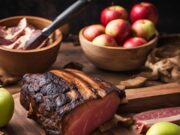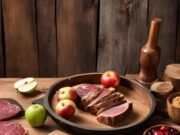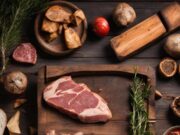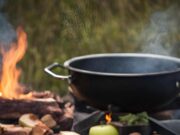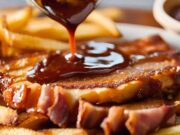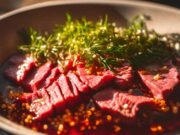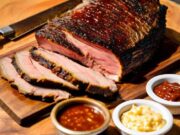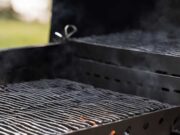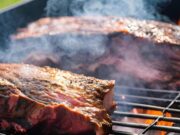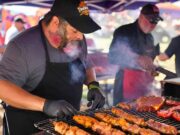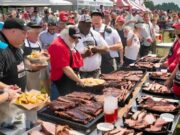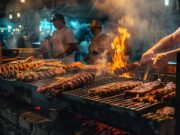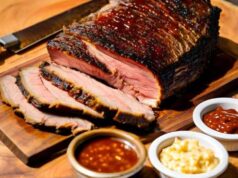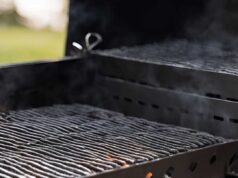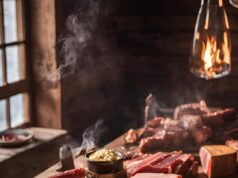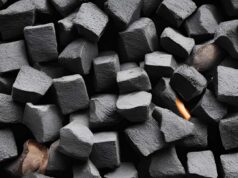When it comes to BBQ, nothing surpasses the satisfaction of serving perfectly butchered, grill-ready meat. This guide will take you through the art of butchering, helping you transform whole cuts into mouthwatering portions that are ideal for your next barbecue feast.
You will learn how to select the right meat and essential tools, as well as master techniques for trimming, deboning, and seasoning. This article will equip you with the knowledge needed to impress your guests. Prepare to elevate your grilling expertise.
Key Takeaways:
- Proper preparation and tools are essential for successful meat butchering for BBQ.
- The process involves selecting, breaking down, trimming, and deboning the whole cut to create grill-ready portions.
- Resting, seasoning, and proper grill preparation are key for mastering the art of butchering meat for delicious BBQ.
Essential Tools and Preparation
Having the right tools for butchering meat is essential for achieving precise cuts and ensuring a smooth preparation process, whether you are using a charcoal or gas grill.
Equipping yourself with essential butchering tools, such as high-quality knives, sturdy cutting boards, and accurate meat thermometers, can significantly enhance your overall experience. Proper preparation of these tools is vital; maintaining a sharp knife optimizes cutting efficiency, while a clean cutting board prevents cross-contamination.
Regularly honing and sanitizing these implements not only preserves their longevity but also promotes effective seasoning. Additionally, integrating a meat thermometer ensures that proteins are cooked to perfection, allowing flavors to fully develop.
Using these tools in conjunction with various grilling techniques can elevate your final dish, bringing out the best in each cut of meat.
Step-by-Step Butchering Process
The step-by-step butchering process is essential for transforming large cuts of meat into manageable, grill-ready portions. This method not only maximizes flavor and tenderness but also enhances the overall BBQ experience.
1. Selecting and Preparing the Whole Cut
Selecting and preparing the whole cut is the first crucial step in butchering meat for BBQ, as it directly impacts the quality and flavor of the final dish, whether you are working with a succulent brisket or a tender whole chicken.
When choosing the right cuts, consider the meat’s quality and marbling, as these factors significantly influence taste and juiciness. Look for cuts that have a good amount of intramuscular fat, as this contributes to seasoning and richness during cooking. Take the time to trim any excess fat that may impede an even cook or overshadow the inherent flavors of the meat itself.
To enhance flavor, it is essential to apply a well-balanced marinade or seasoning blend. Always prioritize freshness by sourcing meat from reputable suppliers who adhere to quality standards, ensuring that your BBQ experience is delightful from the very first bite.
2. Breaking Down the Meat: Trimming and Deboning
Breaking down meat through trimming and deboning is a skill that requires precision and care, ensuring that each cut is clean and ready for grilling, whether you are working with pork butt or other cuts.
Understanding how to effectively trim fat and sinew not only enhances the visual appeal of the meat but also plays a crucial role in maintaining its flavor and juiciness. For instance, when tackling a rich cut like beef brisket, it is important to focus on removing the thick silver skin, which can hinder seasoning and cooking. Conversely, for tender cuts like lamb loin, a lighter touch is essential to retain the natural flavor.
The deboning process varies by cut as well. For chicken, removing the backbone allows for better grilling and roasting, while careful deboning of a pork shoulder opens up more versatile cooking options. Each technique contributes to how the final dish will present on the plate, ultimately enhancing the overall culinary experience.
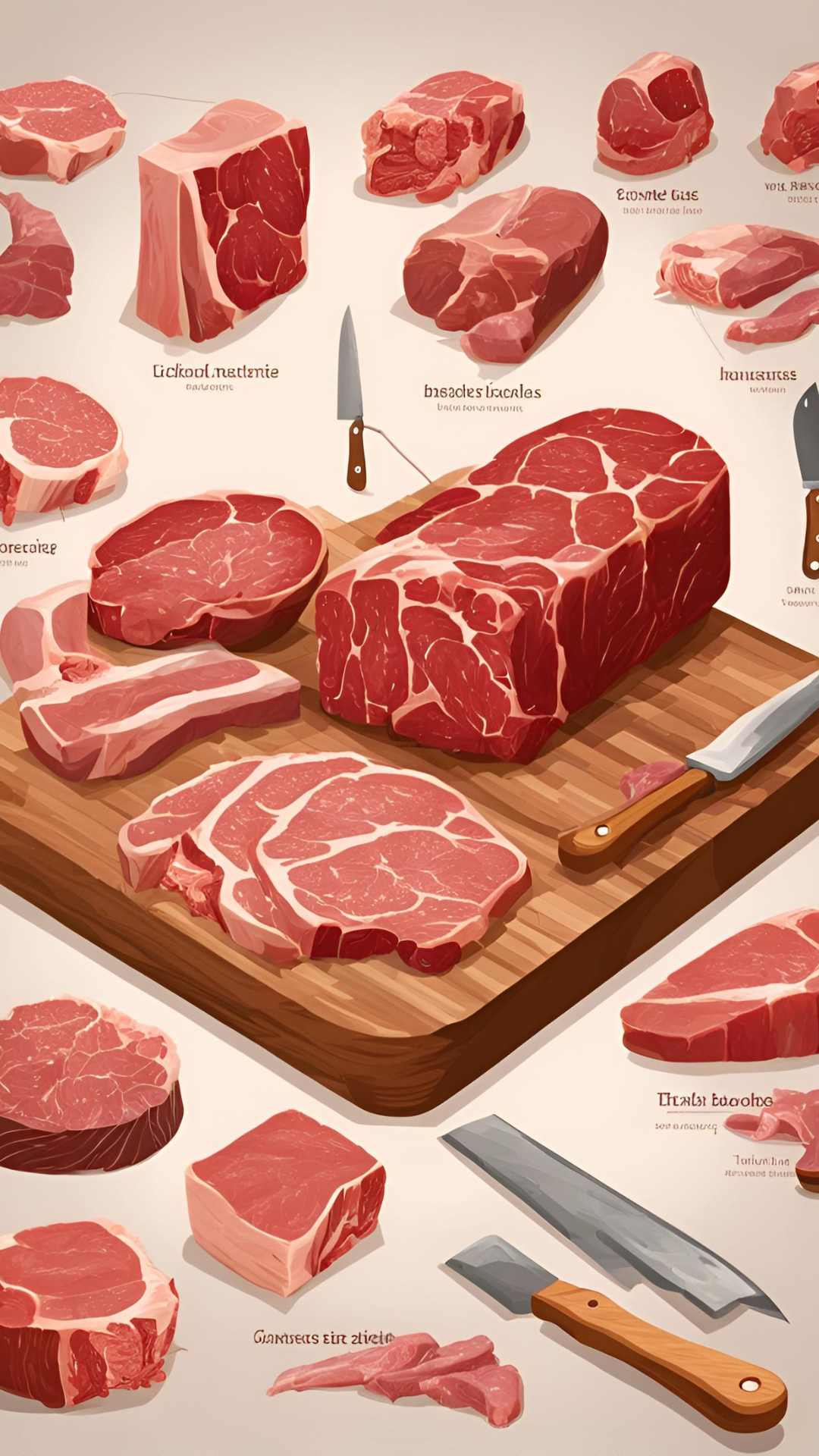
3. Cutting into Grilling Portions
Cutting the meat into grilling portions represents the final step in the butchering process, allowing for even cooking and optimal flavor development when grilling meats such as brisket and whole chicken.
This vital technique not only enhances the flavor but also ensures that the meat remains tender throughout the grilling process. For example, you can cut a whole chicken into quarters or individual pieces, while brisket should be sliced against the grain into one-inch thick portions to achieve maximum tenderness.
The size of the cuts is crucial; larger portions may necessitate longer cooking times, making them suitable for methods like smoking, whereas smaller cuts are ideal for direct grilling, enabling quick cooking while retaining juiciness.
Understanding the thickness of the meat can aid in managing the heat level, ensuring that the outside does not char while the inside remains undercooked.
Meat Seasoning and Marinades
Meat seasoning and marinades are crucial for enhancing the flavor of barbecued meats, adding layers of taste that can elevate a simple brisket or whole chicken into a smoky culinary masterpiece.
These flavor enhancers come in various forms, including dry rubs and liquid marinades, each offering unique benefits that cater to different cooking methods and personal preferences. For example, a dry rub made from chili powder, garlic powder, and other spices can create a robust crust that locks in moisture and provides a satisfying crunch. In contrast, liquid marinades, often containing ingredients like vinegar or citrus juice, penetrate the meat and infuse it with enticing flavors while also tenderizing the fibers.
Popular barbecue sauces can also play a significant role in adding sweeter, tanginess, and a hint of smokiness. To begin, consider using a simple garlic and herb butter rub for chicken or a smoky paprika marinade for pork ribs—both excellent options for enhancing your barbecue experience.
Final Preparations for the Grill
Final preparations for the grill are essential to guarantee that the meticulously butchered and seasoned meat cooks to perfection, regardless of whether you are utilizing a charcoal or gas grill.
1. Resting and Storing the Meat
Resting and properly storing the meat after butchering and before grilling is essential for preserving its juices and enhancing the flavor, ensuring that each bite remains tender and satisfying.
After butchering the meat, allow it to rest for a minimum of 30 minutes outside the refrigerator. This crucial step permits the juices to redistribute throughout the cut. It is important to manage the temperature during this resting period, particularly with larger cuts, to mitigate any risk of bacterial growth.
For optimal freshness, wrap the meat in butcher paper or place it in airtight containers. If the meat is not going to be cooked immediately, storing it in a refrigerator at a stable temperature will help maintain its quality. Proper storage guarantees that the meat will be ready when it’s time to fire up the barbecue, ensuring a flavorful feast.
2. Preparing the Grill
Preparing the grill is a critical step to ensure that the meat cooks evenly and thoroughly, regardless of whether you are using a charcoal or gas grill. This preparation influences the smoky flavor and tenderness of the finished dish.
By following a few straightforward steps, you can master the art of grilling. For charcoal grills, begin by arranging the charcoal briquettes in a mound beneath the vent to promote airflow, and then light them until they are covered with gray ash. This creates a solid foundation for establishing heat zones—intense direct heat on one side and gentler indirect heat on the other.
If you are using a gas grill, turn on one or two burners while leaving the others off to achieve a similar effect. This configuration is essential, as it allows you to sear meats over high heat and then move them to cooler zones for slow cooking. This technique is particularly beneficial for tougher cuts like brisket or ribs, which require additional time to become tender and juicy.
Frequently Asked Questions
What is the best way to prepare meat for BBQ?
The best way to prepare meat for BBQ is by following a step-by-step guide to butchering, starting with whole cuts and ending with grill-ready pieces. This ensures that the meat is properly trimmed and seasoned for optimal flavor and tenderness.
Can any type of meat be used for BBQ?
While most meats can be used for BBQ, certain cuts are more suitable for grilling and require specific butchering techniques. For example, beef brisket and pork shoulder are ideal for low and slow cooking, while ribeye and strip steaks are better for quick grilling.
What tools do I need for butchering meat for BBQ?
The basic tools you will need include a sharp knife, cutting board, meat tenderizer, and meat thermometer. Additional tools that may be helpful include a boning knife, kitchen shears, and a meat grinder.
How do I know when the meat is ready to be grilled?
The best way to determine if the meat is grill-ready is by using a meat thermometer. This will ensure that the meat is cooked to the desired temperature and prevent over or undercooking. The recommended internal temperature for different types of meat can be found in the butchering guide.
Should the meat be trimmed before grilling?
Yes, it is important to trim excess fat and connective tissue from the meat before grilling. This will not only improve the taste and texture of the meat, but it also helps to prevent flare-ups and uneven cooking.
How can I make sure my BBQ meat is tender and juicy?
To ensure tender and juicy BBQ meat, it is crucial to properly butcher and prepare the meat beforehand. This includes removing any silver skin, tenderizing tougher cuts, and marinating the meat for added flavor and moisture. Cooking the meat to the correct temperature and allowing it to rest before slicing will also contribute to a tender and juicy end result.



